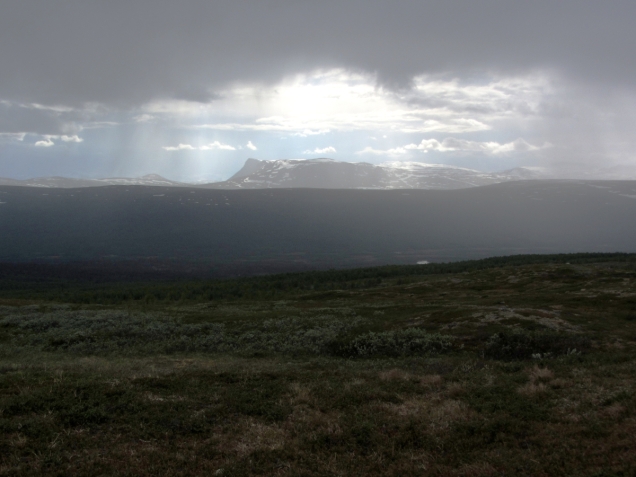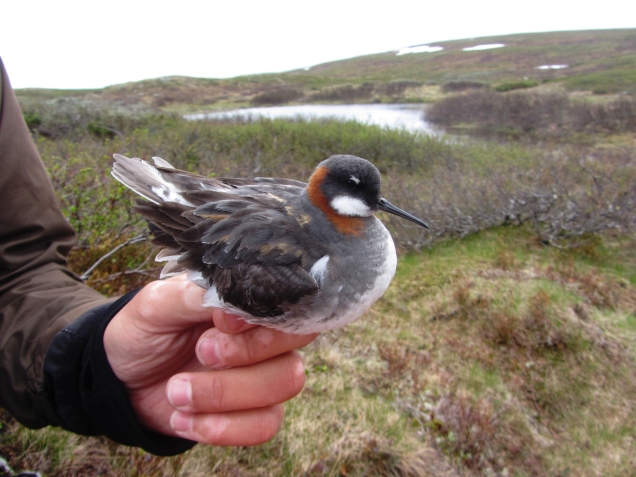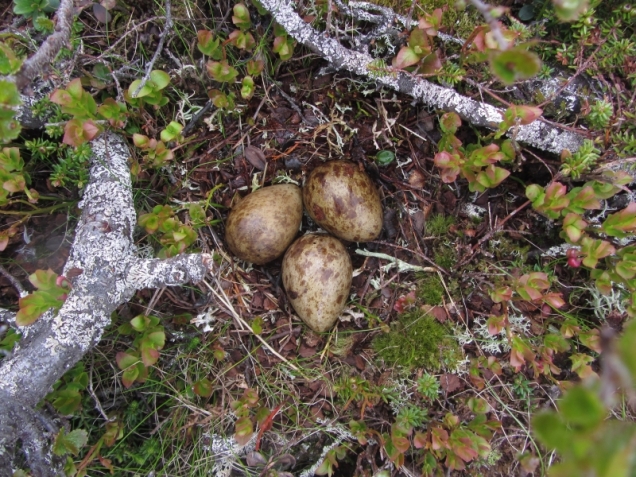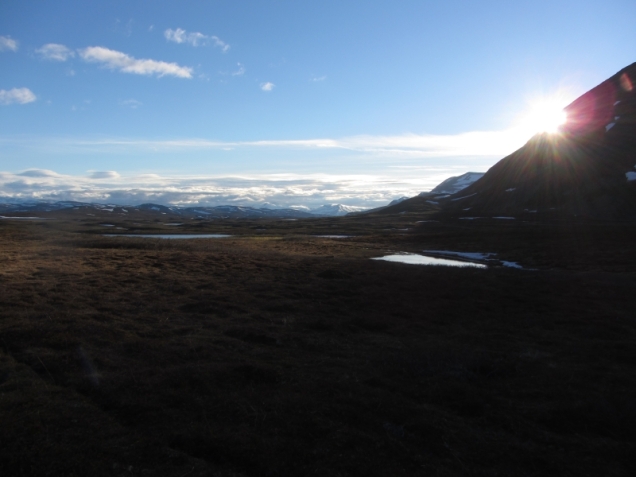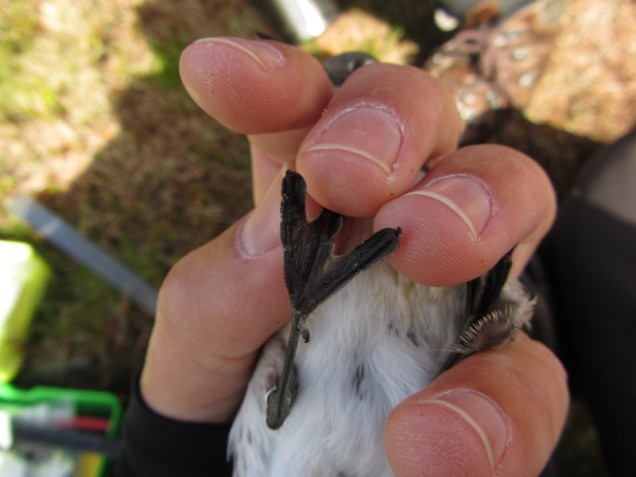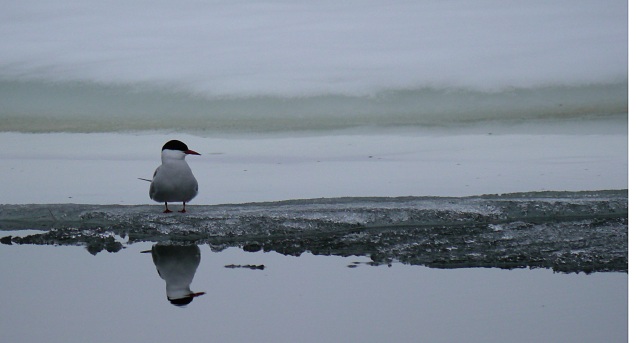Today we had a foreign surprise up in Björkfjället… Johannes has been studying Dunlins around Ammarnäs since 2008. Since last year, we have been collaborating in a circumpolar project on nest predation/survival rates in sandpiper species, focussing on Dunlin. This year, this was extended with another circumpolar collaboration, which aims to map the migration route of all subspecies of Dunlin (there are quite a few, depending on your taxonomic taste).
This morning we went up to Björkfjället to deploy geolocators on three Dunlins. After I retrieved the third bird from the trap, I noticed it had a metal ring! In previous years, Johannes colour-ringed a number of adults, and metal-ringed many chicks in the preceding years. Hence, my first and only thought was ‘this must be a bird ringed as a chick by Johannes’. Little did I know… I handed the bird to Christian, who had a proper look at the ring. ‘PARIS’ it read!! Hence, this bird got his ring somewhere in France.
Dunlins colour-ringed at Ammarnäs have been resighted in, e.g., The Netherlands and Portugal, showing a south-western migration direction. In this respect, the connection with France is not very surprising. However, which stopovers individuals use for what period is not revealed by these colour-ring resightings, but will hopefully be uncovered next year… if we manage to recapture them!
Yesterday, we had great success with Red-necked Phalaropes. We recaptured two males that received a geolocator last year by Michiel, Piet and Tim. Both birds had a full year of data, showing nice tracks down to the Arabian Sea.


